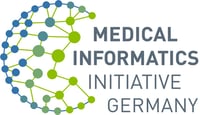Health Enabling Technologies and Data
Reliability of data analytics for low-quality recordings of diverse sensors
Carl-Friedrich-Gauß-Faculty of TU Braunschweig (TU-BS)
This module is part of the certificate ”Secure Development of Medical Information Systems”
Teaching Language: English
Workload: 0h presence / 42h online / 108h self-study = 150h total1 (6 ECTS)
Target Group: The target group is master’s students of computer science, medical informatics, and related study courses. In this module, students learn to understand and solve challenges and difficulties in biomedical signal processing of HET-data and their integration into health records. Students also know and understand the basics of semantic interoperability. Besides, students can actively apply and analyze signal and image processing methods, both in theory and in practice with Python and R.
Students learn how to deal with linear and non-linear noise and to evaluate the suitability of methods for processing or preprocessing HET-data as well as to work out proposals for suitable methods. The module is to be embedded in the master's program in computer science, business informatics, and comparable master's programs in the elective field of medical informatics.



Consultation & Registration:
If you have any questions, please do not hesitate to contact us: info@highmed-lehre.de
Form of teaching: Teaching videos, consulting hour, and e-tivities
The use of health enabling technologies (HET) at home, in the vehicle or worn on the human body generates signal measurements and image data with poor signal quality, shifting offsets and recording gaps. The data quality is much lower as compared to clinical data, but a big data volume is recorded continuously and needs real-time analysis to predict or alarm adverse events.
Hence, HET yields novel challenges in signal processing and data analytics, for instance, reliable collection and semantic integration of this data with the electronic health records of the subjects. In addition, the automatic understanding of measurements requires robust algorithms for analysis, such as deep learning.
Competence Level & Competence Type |
Competence Description
1. Level: Know & Understand
Learners know and understand:
- meaning, the usage and the basic structure of AGT systems
- significant examples of AGT systems and their technical challenges to ensure reliable collection, secure transfer and automatic analysis and interpretation of measurement data
- sensor technology for AGT systems and their basic properties
- architecture and interfaces of data integration centers
- different vocabularies for semantic interoperability
- basic signals of processing
- methods for signal description and signal enhancement
- methods for the visualization of AGT signals
- methods for model-based signal analysis
- methods for data-based signal analysis
2. Level: Apply & Analyze / Method competence
Learners can actively apply and analyze signal and image processing methods in theory as well as in practice with open source software:
- for the reduction of linear and non-linear noise
- for signal enhancement
- for robust data analysis
- for the determination of reliable Ground Truth
- for real-time monitoring, event prediction and emergency detection
3. Level: Evaluate & construct
Learners can:
- handle linear and non-linear noise and evaluate the suitability of methods for conditioning or pre-processing for given AGT signals and develop proposals for suitable methods
- evaluate methods of visualization for the AGT signals to be displayed
- evaluate the suitability of the methods of model- and data-based signal analysis for certain tasks in the processing of AGT signals
- evaluate data integration concepts
The module is to be integrated into the curriculum of the Carl-Friedrich-Gauß-Faculty of TU Braunschweig. The next lecture starts in the winter semester on November 1, 2022 and the registration deadline is October 20, 2022.
1: The times serve as rough orientation. The real times may differ.


